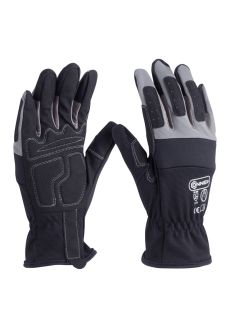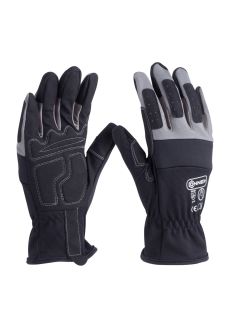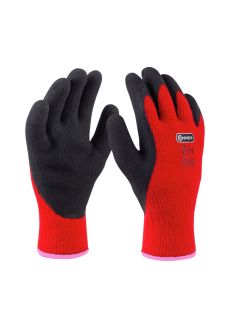WORK GLOVES
Work gloves are essential for protecting your hands from injury and fatigue. Our product guide helps you find the right gloves by outlining the materials and coatings, explaining relevant standards and guidelines and answering frequently asked questions. We will also show you how to find the right glove size. The aim is to help you choose the ideal glove for safe and efficient use. In the world of occupational safety, work gloves play a crucial role in protecting your hands from injury and fatigue. Our product guide provides you with comprehensive information to help you find the best gloves for your needs.
Materials and coatings play a central role in protective gloves, as they determine the protective functions, purpose and comfort. For example, they affect the degree of cut protection, abrasion resistance, as well as the robustness and durability of gloves. These properties are achieved by the selection of materials, the type of coating and their combination as well as by the processing techniques used.
Gloves made of textile fibres have now replaced leather gloves as the most commonly used gloves. Coating can be used to improve the mechanical and chemical properties of the textile knitted gloves. Knitted gloves are elastic and flexible and adapt to each individual hand.
Work glove design in detail
- Carrier material (liner): The liner forms the base of the glove and provides comfort and flexibility
- Coating for function: The coating on the palm and fingers improves grip and abrasion resistance, for example, and provides protection against moisture
- Nubs (optional): Additional nubs on the coating provide even better slip resistance and are particularly suitable for work on smooth or slippery surfaces
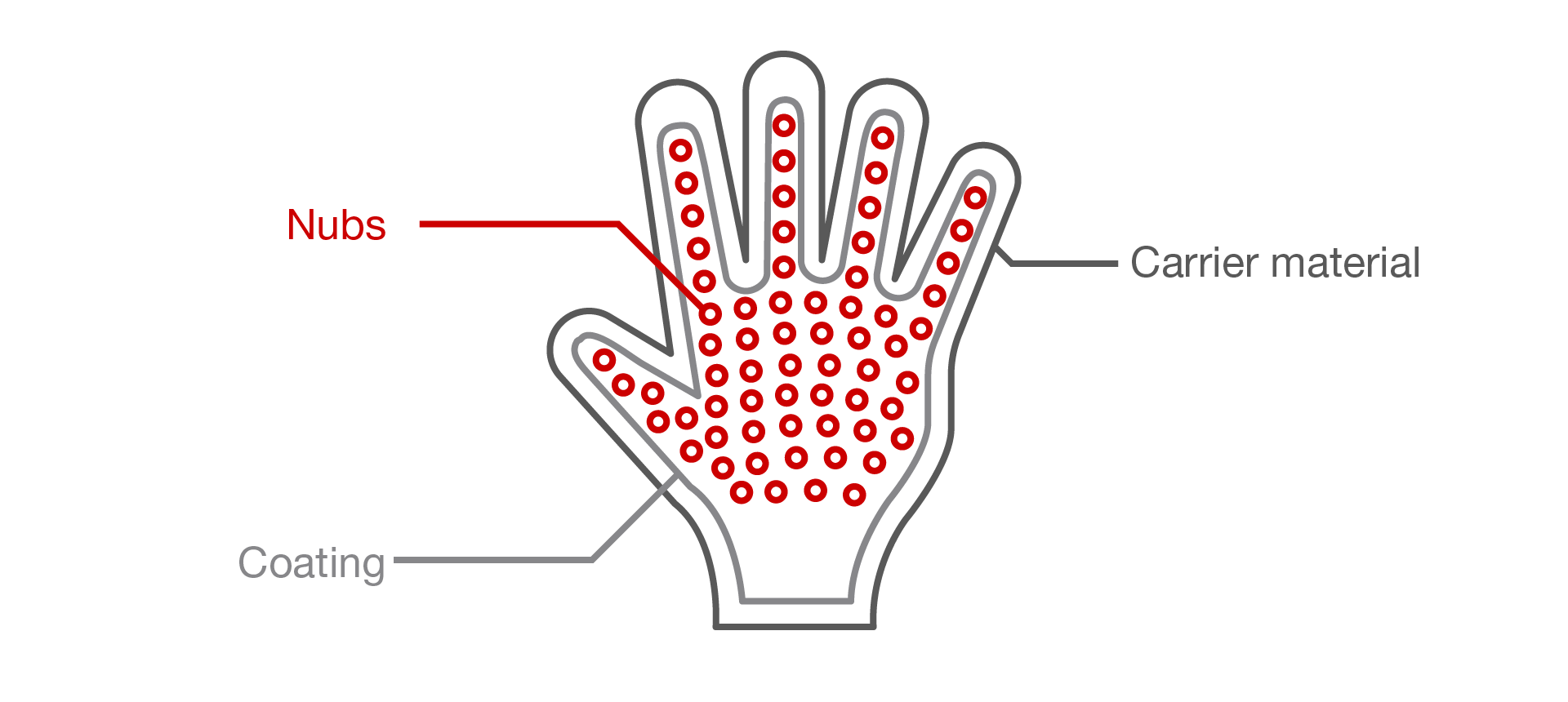

Overview of carrier materials (liner)
Leather
Full-grain leather is machined to the thickness required for the intended use. The surface is firm and smooth, resistant to oils and greases, more weather-resistant than suede.
Split leather, also known as suede, is a collective term for all velour or rough surfaces in the leather sector. Surface-polished [leather] with a more or less velvety surface. The advantages are a pleasant warm grip and a beautiful structure, higher strength and denser fibre structure compared to full-grain leather of the same thickness, which makes it more heat-resistant and cut-resistant.
Synthetic leather, also known as artificial leather or faux leather, is the combination of textile fabric and nonwovens with a plastic coating.Materials produced from these threads are particularly soft and supple and have a consistent surface quality.
Textile
Cotton is a plant-based fibre and therefore very skin-friendly, highly absorbent, e.g. against sweat, and offers pleasant and soft wearing comfort.
Polyester is an elastic synthetic fibre with good tear and abrasion resistance, low moisture absorption, high light and temperature resistance.
Recycled polyester is a recycled plastic fibre with the same properties as conventional polyester.
Polyamide is a synthetic fibre, highly elastic and durable, with good air permeability and higher moisture absorption than polyester.
Recycled polyamide is a recycled plastic fibre with the same properties as conventional nylon.
Elastane (Spandex) is an artificial fibre with high strength and durability, extremely stretchable with high elasticity, light and dimensionally stable, and very elastic.
Acrylic has similar properties to wool, is a soft and warm synthetic fibre, has a high tensile and abrasion resistance, and is therefore often used as cold protection for winter gloves.
Viscose fibres are synthetic fibres (regenerated fibres) made from plant material (regenerated cellulose) (e.g. bamboo). This fine and soft fibre is very comfortable to wear and absorbs moisture very well. The material is breathable.
Overview of coating materials
PU (polyurethane) is a very thin coating with good fingertip sensitivity, is particularly sensitive, very flexible and elastic. The microporous coating is air permeable, which ensures ventilation of the glove. PU does not react to cold or heat, so the glove always adapts to the hand. PU is hard-wearing and durable, with good abrasion resistance, tear resistance and oil resistance.
Latex is a natural rubber made of rubber, very flexible and resistant to mechanical influences. The soft, elastic coating is robust, water-resistant and not resistant to oils and greases. High grip and slip resistance on damp or wet surfaces.
Latex has a high allergy potential, which is why we display the “latex symbol” on the packaging.
Latex foam is a highly elastic coating with excellent grip in dry and humid environments. The microporous structure makes the glove soft and ensures a good fit. Latex foam is also extremely abrasion-resistant.
Nitrile is a synthetic material, mechanically resistant, highly abrasion-resistant and impermeable to liquids. Resistant to chemicals, solvents, oils and greases and fuels. Nitrile coatings are also very durable, have a high resistance and are extremely elastic.
Nitrile foam offers particularly good grip in damp environments or on slightly oily surfaces, is soft, provides freedom of movement and very good tactile sensitivity, the open-pore structure dissipates heat and moisture to the outside and is very abrasion-resistant.
Micro nitrile foam can be dipped extremely thinly, high breathability, good grip, significantly improved fit and wearing comfort.
PVC (polyvinyl chloride) is very resistant to acids and oil as well as light and temperature, highly abrasion resistant and tough, ideal for chemical resistant gloves.
CR (polychloroprene) is a synthetic rubber that has an even higher chemical resistance and ageing resistance than simple rubber. It provides good tactile and fingertip sensitivity, a good fit and high flexibility
Tested material quality


Öko-Tex standard
All components of the glove, such as the backing material (liner), coating and nubs, are tested to stringent global standards for protection against harmful substances.
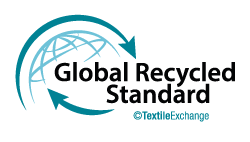

Global Recycled Standard (GRS)
The Global Recycled Standard (GRS) label guarantees recycled textiles with additional environmental and social criteria.
Personal protective equipment (PPE) must be marked with the CE label according to European standards. It is divided into three risk categories:


Category 1 (Cat I)
Simple personal protective equipment (PPE) to protect against minimal risks or hazards (e.g. superficial mechanical injuries). Conformity assessment: Basic requirement EN ISO 21420, CE mark required
Category 2 (Cat II)
Personal protective equipment (PPE) to protect against medium risks or hazards. This standard covers, for example, gloves EN 388, protection against mechanical hazards. Conformity assessment: EU type examination by notified body, CE mark as well as pictograms and performance levels
Category 3 (Cat III)
Complex personal protective equipment (PPE) to protect against irreversible health damage and fatal hazards. e.g. chemical effects, infection protection (viruses, bacteria, fungi, etc. )
Conformity assessment
EU type examination and monitoring of the production facility by a notified body, CE mark, one or more pictograms and performance levels, identification number of the notified body


EN ISO 21420:2020 - General requirements for gloves
The EN 21420 standard defines the relevant test procedures and general requirements that apply to all protective gloves. These include, among other things, the design principles, glove production, resistance of the material to water penetration, harmlessness, wearing comfort and performance. The standard also specifies the labelling to be carried out by the manufacturer and the provision of the required information.
European Standards (EN) - Assessment by performance levels
The hazards against which a protective glove provides protection are indicated by a pictogram. The degree of protection is described in numbers using the performance level. The higher the number, the better the performance level or protective effect. X means that no test has been performed, 0 means that the product has failed the test.
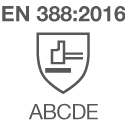

EN 388:2016 – Protection against mechanical risks or hazards
The protective gloves against mechanical risks bear the pictogram of the standard. The performance levels of the test must be listed in the following order:
(A) Abrasion resistance (performance levels 0 - 4)
Number of abrasion cycles required to penetrate the glove.
(B) Cut resistance (coupe test) (performance levels 0 - 5)
Index calculated based on the number of test cycles required to cut the test glove at a constant force (5 Newtons).
(C) Tear resistance (performance levels 0 - 4)
Force required to tear a crack in a rectangular test pattern over half the length.
(D) Puncture resistance (performance levels 0 - 4)
Force required to pierce the test glove with a steel pin of specified dimensions.
(E) Cut resistance (TDM - according to EN ISO 139997) (performance levels A - F)
required force (Newton = N) which must be applied to the standardised blade in order to cut the test material over a length of 20 mm. Only relevant for cut protection gloves. (A = 2 N, F = 30 N)


EN 511 – Protection against cold
The protective gloves against cold bear the pictogram of the standard. The performance levels of the test must be listed in the following order, the parameters are tested:
(A) Convection cooling - (performance levels 0 - 4):
thermal insulation property measured by convection transfer of cold
(B) Contact cold - (performance levels 0 - 4):
thermal resistance in direct contact with a cold object
(C) Water penetration - (performance levels 0/1):
0 = water penetration after 30 minutes of exposure/1 = no water penetration


EN 407:2020 – Protection against thermal risks (heat/fire)
The DIN EN 407:2020 standard deals with the thermal risks for protective gloves, such as contact or radiant heat, flying sparks, fire or liquid metal.
(A) Limited flame formation
The time during which the material continues to burn or shine after the source of fire has been removed is measured. The seams must not be damaged after a burning time of 15 sec. do not dissolve.
(B) Contact heat
The temperature is measured (100° - 500° C), against which the glove is measured for 15 sec. protects without heating the inside by more than 10°C
(C) Convective heat
It measures the time it takes for the inside of the glove to heat up by 24°C after the glove has been exposed to a gas flame.
(D) Radiant heat
The time that elapses before the inside of the glove heats up by 24°C after the glove has been exposed to a gas heater is measured.
(E) Protection against small splashes of molten metal
The number of drops required to increase the temperature on the inside of the glove by 40°C is measured.
(F) Protection against large amounts of molten metal
The amount of liquid metal required to damage a PVC film attached to the inside of the glove is measured.
EN 12477:2001 - Requirements for welding gloves
Protective gloves for welders must meet the requirements of EN 388 and EN 407. In addition, other minimum lengths apply (see hand shot arch page 13). For welding gloves, we distinguish between two versions:
Type A - Coarse welding (MIG/MAG/electric)
Type B - High finger mobility welding (WIG)
| Requirements | EN standard | Type A (min. level value) | Type B (min. level value) |
|---|---|---|---|
| Abrasion resistance | 388 |
2 |
1 |
| Cut resistance | 388 | 1 | 1 |
| Tear resistance | 388 | 2 | 1 |
| Puncture resistance | 388 | 2 | 1 |
| Combustion behaviour | 407 | 3 | 2 |
| Contact heat | 407 | 1 | 1 |
| Convective heat | 407 | 2 | - |
| Small metal splashes | 407 | 3 | 2 |
| Finger mobility | 21420 | 1 | 4 |
The performance levels refer to the entire product, including all layers.
The gloves must not come into contact with open flames if the product has not been tested for burning behaviour (X) or has only reached power level 1.




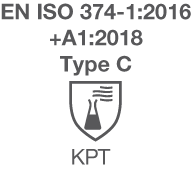

EN ISO 374 - Protection against hazardous chemicals and micro-organisms
The DIN EN ISO 374-1 standard specifies requirements for protective gloves against hazardous chemicals. It applies in conjunction with the basic standard DIN EN ISO 21420 (general requirements). According to the new DIN EN ISO 374-1:2016, the protective gloves are differentiated into three types according to their permeation performance:
Glove type A*: must meet at least performance level 2 against at least 6 test chemicals from the list.
Glove type B**: must meet at least performance level 2 against at least 3 test chemicals from the list.
Glove type C***: must meet at least performance level 1 against at least 1 test chemical from the list.
The letters below the pictogram represent the tested chemicals. The chemical designations (in accordance with Table 2 of EN ISO 374-1:2016) and the achieved performance levels (breakthrough times) are specified in the user information.
| CODE LETTER | TEST CHEMICAL | CAS NUMBER | CLASS |
|---|---|---|---|
| A | Methanol | 67-56-1 | Primary Alcohol |
| B | Acetone | 67-64-1 | Ketone |
| C | Acetonitrile | 75-05-8 | Nitrile |
| D | Dichloromethane | 75-09-2 | Chlorinated Hydrocarbon |
| E | Carbon Disulfide | 75-15-0 | Sulfur-Containing Organic Compound |
| F | Toluene | 108-88-3 | Aromatic Hydrocarbon |
| G | Diethylamine | 109-89-7 | Amine |
| H | Tetrahydrofuran | 109-99-9 | Heterocyclic and Ether Compounds |
| I | Ethyl Acetate | 141-78-6 | Ester |
| J | n-Heptane | 142-82-5 | Aliphatic Hydrocarbon |
| K | Sodium Hydroxide 40% | 1310-73-2 | Inorganic Base |
| L | Sulfuric Acid 96% | 7664-93-9 | Inorganic Acid, Oxidizing |
| M | Nitric Acid 65% | 7697-37-2 | Inorganic Acid, Oxidizing |
| N | Acetic Acid 99% | 64-19-7 | Organic Acid |
| O | Ammonia Solution 25% | 1336-21-6 | Organic Base |
| P | Hydrogen Peroxide 30% | 7722-84-1 | Peroxide |
| S | Hydrofluoric Acid 40% | 7664-39-3 | Inorganic Acid |
| T | Formaldehyde 37% | 50-00-0 | Aldehyde |
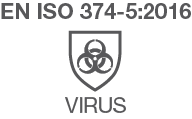

EN ISO 374-5:2016 - Protection against hazardous chemicals and micro-organisms
DIN EN ISO 374-5 specifies the requirements for protective gloves against micro-organisms. It also applies in conjunction with DIN EN 21420.
Chemical protection gloves marked with this pictogram also protect against bacteria and fungi.
If the word “VIRUS” appears under the pictogram, the gloves also offer protection against viruses.
Glove sizes are indicative. Our gloves are usually available in sizes 6 to 11.
Determining the glove size
Measure the width of your palm. You can then convert the measured width in centimetres (cm) to the glove size required according to our size chart.Further product information can be found in our online catalogue on each product and documents such as declaration of conformity, operating instructions, etc. can be downloaded.
The General Terms and Conditions can be found on a separate subpage of the website: Terms and conditions
Correct measurement
Use a measuring tape to measure the length or circumference of the hand. The hand should be open and the fingers extended.
Length measurement: between the palm and the tip of the longest finger (see illustration)
Measurement of the circumference of the hand: from the flexion between the thumb and index finger (see illustration)
Measure the lengths and use the table to determine the correct glove size.
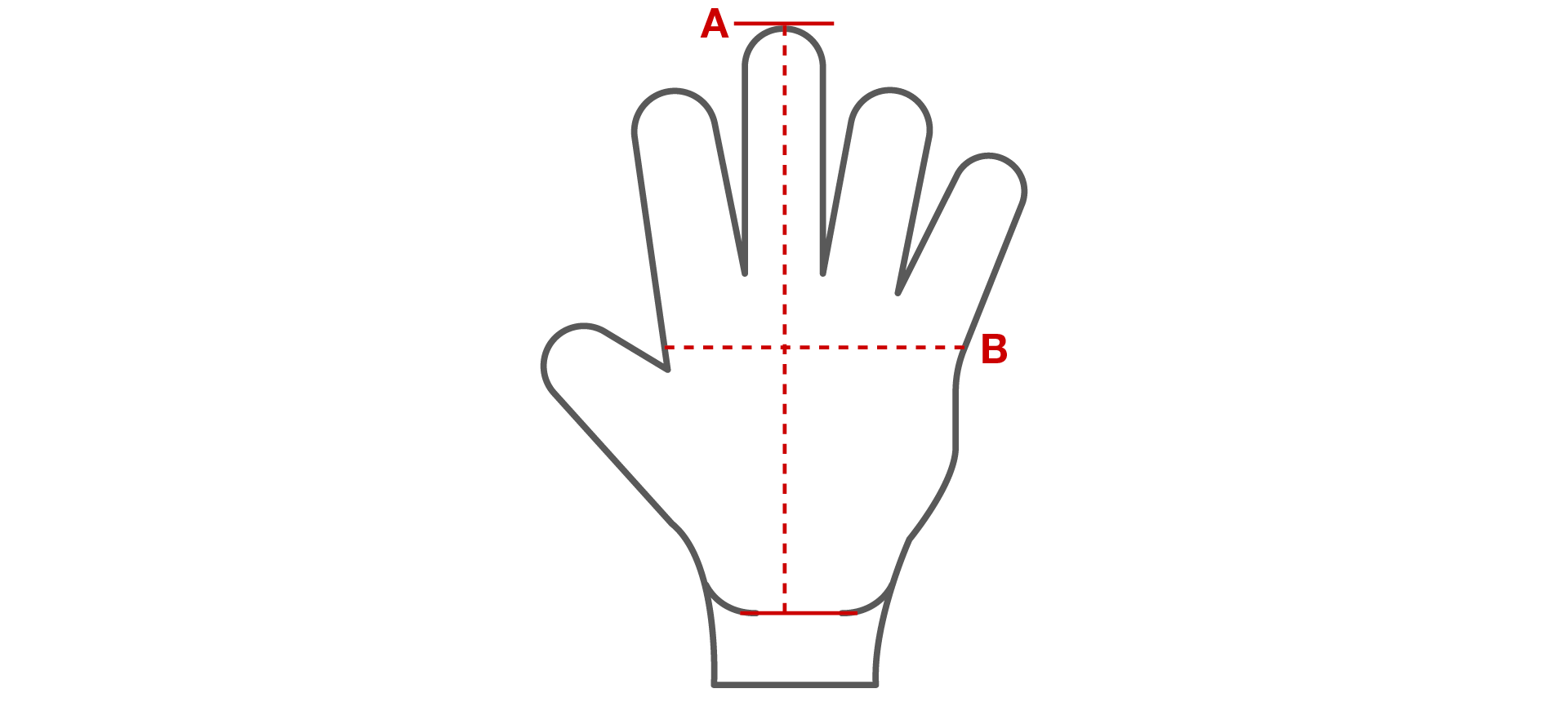

Size chart for CONNEX work gloves
| Glove size | 6 (XS) | 7 (S) | 8 (M) | 9 (L) | 10 (XL) | 11 (XXL) |
|---|---|---|---|---|---|---|
| Hand length in mm | 160 | 171 | 182 | 192 | 204 | 215 |
| Hand circumference in mm | 152 | 178 | 203 | 229 | 254 | 279 |
| Color code | White | Red | Green | Grey | Yellow | Black |
If you are a B2B retailer looking for a comprehensive and high-quality range of work gloves for your business, our sales team will be happy to help. We offer you tailored solutions that are perfectly tailored to your customers’ needs. Contact us today to learn more about our products and receive customised offers. Together, we ensure that you can offer your customers the best in the field of occupational health and safety!




















